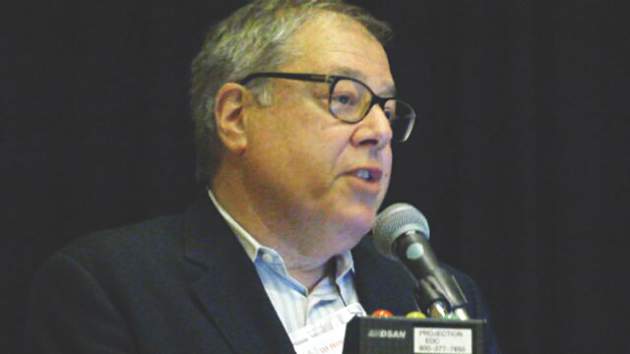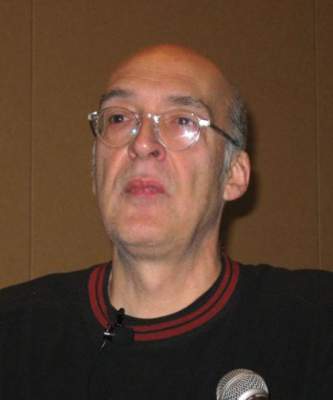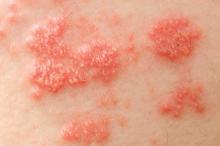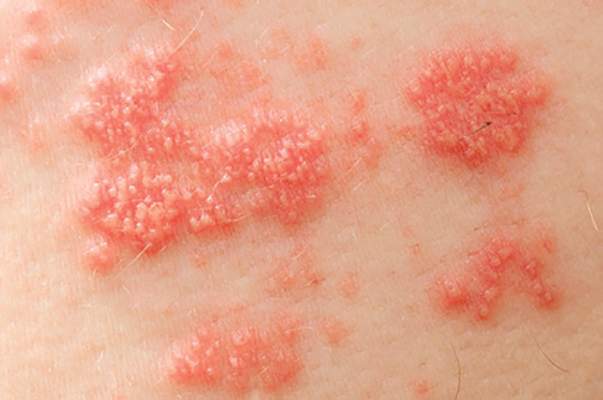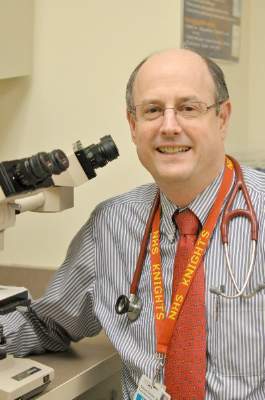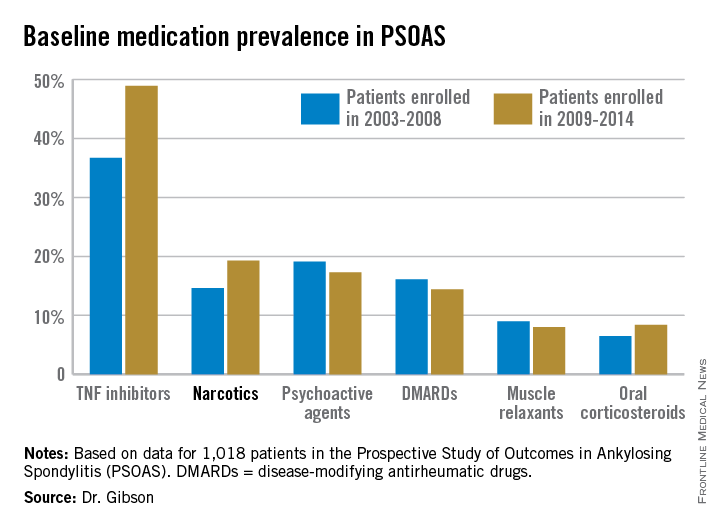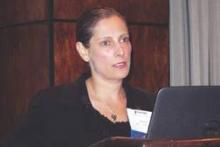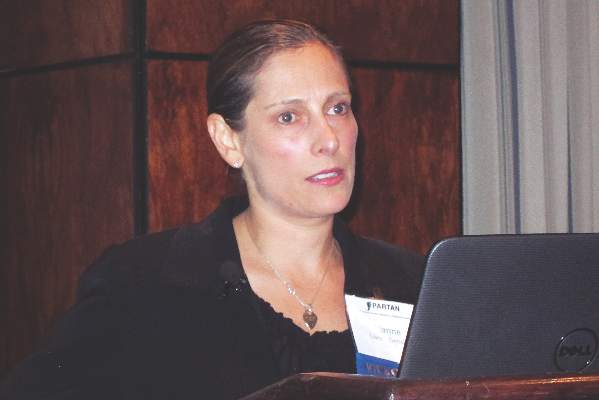User login
ACR: Video capsule endoscopy finds Crohn’s disease best in spondyloarthropathy patients
SAN FRANCISCO – Video capsule endoscopy proved superior to ileocolonoscopy in detecting lesions consistent with Crohn’s disease in patients with known spondyloarthropathies in a study presented at the annual meeting of the American College of Rheumatology.
“The incremental yield of CE [capsule endoscopy) was 31% over IC [ileocolonoscopy]. CE changed management in two-thirds of patients in this study. CE should be the first round of tests to detect CD [Crohn’s disease] in patients with SpA [spondyloarthropathies]. This is a ‘game-changer,’ ” stated senior author Dr. Ernest Seidman of McGill University, Montreal.
Although IC can show asymptomatic inflammation of the terminal ileum, it is “ignoring the rest of the small bowel,” he said.
About 5%-10% of patients with SpA manifest with inflammatory bowel disease, whereas 40%-60% of SpA patients have microscopic biological evidence of gut inflammation that typically occurs without symptoms. These patients don’t meet the criteria for inflammatory bowel disease, Dr. Seidman explained.
The study included 64 patients with SpA or ankylosing spondylitis with or without gastrointestinal symptoms; 58% had gastrointestinal symptoms. All patients were taken off NSAIDs for 1 month prior to the study because their use may be associated with inflammation that is indistinguishable from microscopic bowel inflammation. Treatment with anti–tumor necrosis factor biologics was not allowed, with the exception of etanercept. On the day before CE, patients had a liquid diet. CE was performed on all patients first, and then IC was performed.
“The sequence was important,” Dr. Seidman noted.
The investigators used a value of greater than 350 on the Lewis score, a validated measure of inflammatory activity on small-bowel CE, to identify moderate Crohn’s disease.
None of the patients with negative CE had Crohn’s disease; 45.3% had inflammation typical for Crohn’s disease on CE, compared with 14% on IC (P =.036). All positive ileal and colonoscopic biopsies were consistent with Crohn’s disease.
The study also showed that fecal calprotectin levels were significantly correlated with mucosal inflammation observed on CE. However, the presence of gastrointestinal symptoms, C-reactive protein level, and the results from a panel of serologic, inflammatory and genetic tests (a commercial test called IBD sgi Diagnostic) were not predictive of small bowel inflammation in these patients.
AbbVie funded the study. Dr. Seidman reported financial disclosures with Abbott Immunology Pharmaceuticals and Prometheus Laboratories, which he said supplied the video capsules.
SAN FRANCISCO – Video capsule endoscopy proved superior to ileocolonoscopy in detecting lesions consistent with Crohn’s disease in patients with known spondyloarthropathies in a study presented at the annual meeting of the American College of Rheumatology.
“The incremental yield of CE [capsule endoscopy) was 31% over IC [ileocolonoscopy]. CE changed management in two-thirds of patients in this study. CE should be the first round of tests to detect CD [Crohn’s disease] in patients with SpA [spondyloarthropathies]. This is a ‘game-changer,’ ” stated senior author Dr. Ernest Seidman of McGill University, Montreal.
Although IC can show asymptomatic inflammation of the terminal ileum, it is “ignoring the rest of the small bowel,” he said.
About 5%-10% of patients with SpA manifest with inflammatory bowel disease, whereas 40%-60% of SpA patients have microscopic biological evidence of gut inflammation that typically occurs without symptoms. These patients don’t meet the criteria for inflammatory bowel disease, Dr. Seidman explained.
The study included 64 patients with SpA or ankylosing spondylitis with or without gastrointestinal symptoms; 58% had gastrointestinal symptoms. All patients were taken off NSAIDs for 1 month prior to the study because their use may be associated with inflammation that is indistinguishable from microscopic bowel inflammation. Treatment with anti–tumor necrosis factor biologics was not allowed, with the exception of etanercept. On the day before CE, patients had a liquid diet. CE was performed on all patients first, and then IC was performed.
“The sequence was important,” Dr. Seidman noted.
The investigators used a value of greater than 350 on the Lewis score, a validated measure of inflammatory activity on small-bowel CE, to identify moderate Crohn’s disease.
None of the patients with negative CE had Crohn’s disease; 45.3% had inflammation typical for Crohn’s disease on CE, compared with 14% on IC (P =.036). All positive ileal and colonoscopic biopsies were consistent with Crohn’s disease.
The study also showed that fecal calprotectin levels were significantly correlated with mucosal inflammation observed on CE. However, the presence of gastrointestinal symptoms, C-reactive protein level, and the results from a panel of serologic, inflammatory and genetic tests (a commercial test called IBD sgi Diagnostic) were not predictive of small bowel inflammation in these patients.
AbbVie funded the study. Dr. Seidman reported financial disclosures with Abbott Immunology Pharmaceuticals and Prometheus Laboratories, which he said supplied the video capsules.
SAN FRANCISCO – Video capsule endoscopy proved superior to ileocolonoscopy in detecting lesions consistent with Crohn’s disease in patients with known spondyloarthropathies in a study presented at the annual meeting of the American College of Rheumatology.
“The incremental yield of CE [capsule endoscopy) was 31% over IC [ileocolonoscopy]. CE changed management in two-thirds of patients in this study. CE should be the first round of tests to detect CD [Crohn’s disease] in patients with SpA [spondyloarthropathies]. This is a ‘game-changer,’ ” stated senior author Dr. Ernest Seidman of McGill University, Montreal.
Although IC can show asymptomatic inflammation of the terminal ileum, it is “ignoring the rest of the small bowel,” he said.
About 5%-10% of patients with SpA manifest with inflammatory bowel disease, whereas 40%-60% of SpA patients have microscopic biological evidence of gut inflammation that typically occurs without symptoms. These patients don’t meet the criteria for inflammatory bowel disease, Dr. Seidman explained.
The study included 64 patients with SpA or ankylosing spondylitis with or without gastrointestinal symptoms; 58% had gastrointestinal symptoms. All patients were taken off NSAIDs for 1 month prior to the study because their use may be associated with inflammation that is indistinguishable from microscopic bowel inflammation. Treatment with anti–tumor necrosis factor biologics was not allowed, with the exception of etanercept. On the day before CE, patients had a liquid diet. CE was performed on all patients first, and then IC was performed.
“The sequence was important,” Dr. Seidman noted.
The investigators used a value of greater than 350 on the Lewis score, a validated measure of inflammatory activity on small-bowel CE, to identify moderate Crohn’s disease.
None of the patients with negative CE had Crohn’s disease; 45.3% had inflammation typical for Crohn’s disease on CE, compared with 14% on IC (P =.036). All positive ileal and colonoscopic biopsies were consistent with Crohn’s disease.
The study also showed that fecal calprotectin levels were significantly correlated with mucosal inflammation observed on CE. However, the presence of gastrointestinal symptoms, C-reactive protein level, and the results from a panel of serologic, inflammatory and genetic tests (a commercial test called IBD sgi Diagnostic) were not predictive of small bowel inflammation in these patients.
AbbVie funded the study. Dr. Seidman reported financial disclosures with Abbott Immunology Pharmaceuticals and Prometheus Laboratories, which he said supplied the video capsules.
AT THE ACR ANNUAL MEETING
Key clinical point:Video capsule endoscopy is better than ileocolonoscopy for detection of Crohn’s disease in patients with spondyloarthropathies.
Major finding: Video capsule endoscopy detected Crohn’s disease in 45% of patients, compared with 14% detected by ileocolonoscopy (P =.036).
Data source: Prospective study of 64 patients with SpA who underwent video capsule endoscopy followed by ileocolonoscopy.
Disclosures: AbbVie funded the study. Dr. Seidman reported financial disclosures with Abbott Immunology Pharmaceuticals and Prometheus Laboratories, which he said supplied the video capsules.
Stroke risk rose in autoimmune disease patients after herpes zoster
Stroke risk was 50% higher in the month after patients with autoimmune diseases developed herpes zoster, compared with the next 2-6 years, according to Dr. Leonard H. Calabrese.
“These data provide urgency for developing strategies to reduce the risk of varicella zoster virus in vulnerable immunosuppressed patients,” said Dr. Calabrese of the department of rheumatic and immunologic diseases at the Cleveland Clinic.
Immunosuppressive therapies increase the frequency and complexity of herpes zoster, which is a known risk factor for stroke. To examine the temporal relationship between herpes zoster and stroke among immunosuppressed patients, Dr. Calabrese and his associates studied Medicare data for almost 51,000 patients with new-onset herpes zoster who also had physician-diagnosed ankylosing spondylitis, inflammatory bowel disease, psoriasis, psoriatic arthritis, or rheumatoid arthritis. The researchers excluded patients with a history of stroke.
In the multivariable analysis, stroke was 1.5 times more likely during the 6 months immediately after herpes zoster than in the 2-6 years after herpes zoster (95% confidence interval, 1.06-2.12). During this 6-month window, there were 9.8 strokes per 1,000 person-years, compared with 8.7 per 1,000 person-years in the 2-6 years after herpes zoster. Stroke risk also remained somewhat elevated during the entire year after herpes zoster (incidence rate ratio, 1.3; 95% CI, 1.05-1.61).
In general, stroke was more likely to occur among patients who were older, were receiving high-dose glucocorticoids, or had diabetes, hypertension, atrial fibrillation, or a history of transient ischemic attack, he said at the annual meeting of the American College of Rheumatology in San Francisco.
Dr. Calabrese disclosed relationships with Bristol-Myers Squibb, Crescendo, AbbVie, Genentech, Biogen, Pfizer, Sanofi-Aventis Pharmaceutical, and Johnson & Johnson. Two coauthors also disclosed relationships with several pharmaceutical companies. The other four coinvestigators had no disclosures.
Stroke risk was 50% higher in the month after patients with autoimmune diseases developed herpes zoster, compared with the next 2-6 years, according to Dr. Leonard H. Calabrese.
“These data provide urgency for developing strategies to reduce the risk of varicella zoster virus in vulnerable immunosuppressed patients,” said Dr. Calabrese of the department of rheumatic and immunologic diseases at the Cleveland Clinic.
Immunosuppressive therapies increase the frequency and complexity of herpes zoster, which is a known risk factor for stroke. To examine the temporal relationship between herpes zoster and stroke among immunosuppressed patients, Dr. Calabrese and his associates studied Medicare data for almost 51,000 patients with new-onset herpes zoster who also had physician-diagnosed ankylosing spondylitis, inflammatory bowel disease, psoriasis, psoriatic arthritis, or rheumatoid arthritis. The researchers excluded patients with a history of stroke.
In the multivariable analysis, stroke was 1.5 times more likely during the 6 months immediately after herpes zoster than in the 2-6 years after herpes zoster (95% confidence interval, 1.06-2.12). During this 6-month window, there were 9.8 strokes per 1,000 person-years, compared with 8.7 per 1,000 person-years in the 2-6 years after herpes zoster. Stroke risk also remained somewhat elevated during the entire year after herpes zoster (incidence rate ratio, 1.3; 95% CI, 1.05-1.61).
In general, stroke was more likely to occur among patients who were older, were receiving high-dose glucocorticoids, or had diabetes, hypertension, atrial fibrillation, or a history of transient ischemic attack, he said at the annual meeting of the American College of Rheumatology in San Francisco.
Dr. Calabrese disclosed relationships with Bristol-Myers Squibb, Crescendo, AbbVie, Genentech, Biogen, Pfizer, Sanofi-Aventis Pharmaceutical, and Johnson & Johnson. Two coauthors also disclosed relationships with several pharmaceutical companies. The other four coinvestigators had no disclosures.
Stroke risk was 50% higher in the month after patients with autoimmune diseases developed herpes zoster, compared with the next 2-6 years, according to Dr. Leonard H. Calabrese.
“These data provide urgency for developing strategies to reduce the risk of varicella zoster virus in vulnerable immunosuppressed patients,” said Dr. Calabrese of the department of rheumatic and immunologic diseases at the Cleveland Clinic.
Immunosuppressive therapies increase the frequency and complexity of herpes zoster, which is a known risk factor for stroke. To examine the temporal relationship between herpes zoster and stroke among immunosuppressed patients, Dr. Calabrese and his associates studied Medicare data for almost 51,000 patients with new-onset herpes zoster who also had physician-diagnosed ankylosing spondylitis, inflammatory bowel disease, psoriasis, psoriatic arthritis, or rheumatoid arthritis. The researchers excluded patients with a history of stroke.
In the multivariable analysis, stroke was 1.5 times more likely during the 6 months immediately after herpes zoster than in the 2-6 years after herpes zoster (95% confidence interval, 1.06-2.12). During this 6-month window, there were 9.8 strokes per 1,000 person-years, compared with 8.7 per 1,000 person-years in the 2-6 years after herpes zoster. Stroke risk also remained somewhat elevated during the entire year after herpes zoster (incidence rate ratio, 1.3; 95% CI, 1.05-1.61).
In general, stroke was more likely to occur among patients who were older, were receiving high-dose glucocorticoids, or had diabetes, hypertension, atrial fibrillation, or a history of transient ischemic attack, he said at the annual meeting of the American College of Rheumatology in San Francisco.
Dr. Calabrese disclosed relationships with Bristol-Myers Squibb, Crescendo, AbbVie, Genentech, Biogen, Pfizer, Sanofi-Aventis Pharmaceutical, and Johnson & Johnson. Two coauthors also disclosed relationships with several pharmaceutical companies. The other four coinvestigators had no disclosures.
FROM THE ACR ANNUAL MEETING
Key clinical point: Stroke risk increased by 50% in the month after patients with autoimmune diseases had an episode of herpes zoster.
Major finding: The risk of stroke was 50% higher in the 6 months immediately after incident herpes zoster than 2-6 years after herpes zoster (95% CI, 1.06- 2.12).
Data source: An analysis of Medicare data for 50,929 patients with autoimmune disease and incident herpes zoster between 2006 and 2012.
Disclosures: Dr. Calabrese disclosed relationships with Bristol-Myers Squibb, Crescendo, AbbVie, Genentech, Biogen, Pfizer, Sanofi-Aventis Pharmaceutical, and Johnson & Johnson. Two coauthors also disclosed relationships with several pharmaceutical companies. The other four coinvestigators had no disclosures.
Shingles vaccine protection lasted 5-6 years in autoimmune disease patients
Protection against shingles appeared to wane between the fifth and sixth years after patients with autoimmune diseases received the live herpes zoster vaccine, according to a large retrospective cohort study presented at the annual meeting of the American College of Rheumatology.
In contrast, shingles risk remained fairly constant among unvaccinated patients, reported Dr. Huifeng Yun, assistant professor of epidemiology at the University of Alabama, Birmingham. Based on the findings, clinicians could consider revaccinating patients with autoimmune diseases about 5 years after their first live herpes zoster vaccine, she said.*
The long-term Shingles Prevention Study recently showed that the live herpes zoster vaccine is effective for about a decade among healthy older individuals, but the duration of protection for patients with autoimmune diseases was unclear, the investigators said. Therefore, they retrospectively studied Medicare data for more than 130,000 such patients between 2006 and 2012. About one-third of patients were vaccinated against herpes zoster, and 47% had rheumatoid arthritis, 32% had psoriasis, 21% had inflammatory bowel disease, 5% had psoriatic arthritis, and 1% had ankylosing spondylitis.
Rates of herpes zoster among vaccinated patients rose from 0.75 per 100 person-years during the first year after vaccination to 1.36 during the sixth year. In the adjusted analysis, vaccinated patients had about half the risk of herpes zoster, compared with unvaccinated patients, during year 1 (relative risk, 0.52; 95% confidence interval, 0.45-0.61) and remained substantially less likely to develop shingles until year 6, when the gap in risk between vaccinated and unvaccinated patients essentially closed (RR, 0.92; 95% CI, 0.45-1.86). There was no overall change in risk among unvaccinated patients during the study period, the investigators noted.
Dr. Yun disclosed a financial relationship with Amgen. The senior author and two coauthors also disclosed relationships with several pharmaceutical companies. Two investigators had no disclosures.
* Correction, 11/13/2015: The article previously misstated Dr. Yun's gender.
Protection against shingles appeared to wane between the fifth and sixth years after patients with autoimmune diseases received the live herpes zoster vaccine, according to a large retrospective cohort study presented at the annual meeting of the American College of Rheumatology.
In contrast, shingles risk remained fairly constant among unvaccinated patients, reported Dr. Huifeng Yun, assistant professor of epidemiology at the University of Alabama, Birmingham. Based on the findings, clinicians could consider revaccinating patients with autoimmune diseases about 5 years after their first live herpes zoster vaccine, she said.*
The long-term Shingles Prevention Study recently showed that the live herpes zoster vaccine is effective for about a decade among healthy older individuals, but the duration of protection for patients with autoimmune diseases was unclear, the investigators said. Therefore, they retrospectively studied Medicare data for more than 130,000 such patients between 2006 and 2012. About one-third of patients were vaccinated against herpes zoster, and 47% had rheumatoid arthritis, 32% had psoriasis, 21% had inflammatory bowel disease, 5% had psoriatic arthritis, and 1% had ankylosing spondylitis.
Rates of herpes zoster among vaccinated patients rose from 0.75 per 100 person-years during the first year after vaccination to 1.36 during the sixth year. In the adjusted analysis, vaccinated patients had about half the risk of herpes zoster, compared with unvaccinated patients, during year 1 (relative risk, 0.52; 95% confidence interval, 0.45-0.61) and remained substantially less likely to develop shingles until year 6, when the gap in risk between vaccinated and unvaccinated patients essentially closed (RR, 0.92; 95% CI, 0.45-1.86). There was no overall change in risk among unvaccinated patients during the study period, the investigators noted.
Dr. Yun disclosed a financial relationship with Amgen. The senior author and two coauthors also disclosed relationships with several pharmaceutical companies. Two investigators had no disclosures.
* Correction, 11/13/2015: The article previously misstated Dr. Yun's gender.
Protection against shingles appeared to wane between the fifth and sixth years after patients with autoimmune diseases received the live herpes zoster vaccine, according to a large retrospective cohort study presented at the annual meeting of the American College of Rheumatology.
In contrast, shingles risk remained fairly constant among unvaccinated patients, reported Dr. Huifeng Yun, assistant professor of epidemiology at the University of Alabama, Birmingham. Based on the findings, clinicians could consider revaccinating patients with autoimmune diseases about 5 years after their first live herpes zoster vaccine, she said.*
The long-term Shingles Prevention Study recently showed that the live herpes zoster vaccine is effective for about a decade among healthy older individuals, but the duration of protection for patients with autoimmune diseases was unclear, the investigators said. Therefore, they retrospectively studied Medicare data for more than 130,000 such patients between 2006 and 2012. About one-third of patients were vaccinated against herpes zoster, and 47% had rheumatoid arthritis, 32% had psoriasis, 21% had inflammatory bowel disease, 5% had psoriatic arthritis, and 1% had ankylosing spondylitis.
Rates of herpes zoster among vaccinated patients rose from 0.75 per 100 person-years during the first year after vaccination to 1.36 during the sixth year. In the adjusted analysis, vaccinated patients had about half the risk of herpes zoster, compared with unvaccinated patients, during year 1 (relative risk, 0.52; 95% confidence interval, 0.45-0.61) and remained substantially less likely to develop shingles until year 6, when the gap in risk between vaccinated and unvaccinated patients essentially closed (RR, 0.92; 95% CI, 0.45-1.86). There was no overall change in risk among unvaccinated patients during the study period, the investigators noted.
Dr. Yun disclosed a financial relationship with Amgen. The senior author and two coauthors also disclosed relationships with several pharmaceutical companies. Two investigators had no disclosures.
* Correction, 11/13/2015: The article previously misstated Dr. Yun's gender.
FROM THE ACR ANNUAL MEETING
Key clinical point: Protection against shingles appeared to wane between the fifth and sixth years after patients with autoimmune diseases received the live herpes zoster vaccine.
Major finding: The rate of herpes zoster rose from 0.75 per 100 person-years in the first year after vaccination to 1.36 in the sixth year, when it approached the rate among unvaccinated patients.
Data source: Retrospective analysis of 130,107 Medicare patients with autoimmune diseases between 2006 and 2012.
Disclosures: Dr. Yun disclosed a financial relationship with Amgen. The senior author and two coauthors also disclosed relationships with several pharmaceutical companies. Two investigators had no disclosures.
No stone left unturned in ACR 2015 clinical sessions
If you haven’t dealt with a chikungunya patient yet, you probably will soon.
The mosquito-borne virus, long considered a tropical disease, is on the upswing in the United States, carried back especially by vacationers returning from the Caribbean. It causes an inflammatory arthritis that’s hard to recognize and treat.
“We’ve actually even had some here in Seattle,” said Dr. Gregory Gardner, a rheumatologist at the University of Washington, Seattle.
So a session this year at the annual meeting of the American College of Rheumatology, “Coming to a Joint Near You: Chikungunya” on Sunday, Nov. 8, at 8:30 a.m., is probably one that attendees won’t want to miss, said Dr. Gardner, one of the many planners of this year’s meeting.
The session will cover chikungunya immunopathology, clinical manifestations, and treatment – just about all you need to know to handle a case. The chikungunya session is just one example of the meeting’s timely, on-point clinical information. Another one that’s likely to be popular is “Maintenance Therapy in ANCA-Associated Vasculitis: Evaluation and Treatment of Patients in Remission,” on Monday, Nov. 9, at 7:30 a.m., and “The Great Debate: Long-Term, Low-Dose Corticosteroid Use in the Treatment of Rheumatoid Arthritis” on Sunday at 2:30 p.m. While some worry about the long-term side effects of steroids in rheumatoid arthritis, others think the approach is safe and possibly even disease modifying, Dr. Gardner said.
The clinical sessions will be complimented by a full slate of original science. “We’ve had more abstracts submitted this year than to any other previous meeting,” over 4,000. “There’s great research being presented,” said Dr. Victoria Shanmugam, a Washington, D.C., rheumatologist and also a planner of this year’s meeting.
Getting into the late-breaking abstract session on Tuesday, Nov. 10, at 4:30 p.m. “was incredibly competitive this year,” she said. Just a handful of the 70 submissions made it. Investigators who did will share their latest findings on tocilizumab for giant cell arteritis; baricitinib versus placebo or adalimumab for rheumatoid arthritis; adalimumab with methotrexate for uveitis in juvenile idiopathic arthritis; epratuzumab in moderate to severe systemic lupus; tofacitinib in ankylosing spondylitis; and interleukin-17a inhibition in active ankylosing spondylitis.
There’ll also be a strong show of original research in the plenary sessions at 11 a.m. Sunday, Monday, and Tuesday. Studies in Tuesday’s session, for instance, include investigations into the pharmacogenetics of allopurinol in gout and the role of anakinra in recurrent pericarditis.
Results from the Scleroderma Lung Study II, which pitted oral cyclophosphamide against mycophenolate mofetil for interstitial lung disease in systemic sclerosis, will be revealed Sunday at 4:30 p.m. in the “Systemic Sclerosis, Fibrosing Syndromes, and Raynaud’s – Clinical Aspects and Therapeutics I” session. Until now, there haven’t been strong prospective data to support the use of mycophenolate in scleroderma lung disease. “There will be a lot of interest in this. People have been waiting for these results to come out,” Dr. Shanmugam said.
Planners have done something new this year by bringing fertility and pregnancy research into its own dedicated abstract session, “Reproductive Issues in Rheumatic Disorders: Basic and Clinical Aspects,” on Monday at 4:30 p.m.
It’s recognition of the central role those issues play in rheumatology. Fertility and pregnancy are a “major clinical challenge we face in daily practice. Our diseases often present during pregnancy, and we tend to have diseases that affect young women. Patients have a lot of questions,” Dr. Shanmugam said.
The abstract session will be a mix of basic and clinical research across a range of rheumatic conditions. The hope is to break down the silos in rheumatology to foster collaboration and move the field forward, she said.
That session will be complemented by “Reproductive Issues in Rheumatology” on Wednesday at 11:00 a.m. – focusing on biologics in pregnancy and pregnancy outcomes in rheumatoid arthritis – as well as “Pregnancy and Infertility in Rheumatic Disease” on Monday at 2:30 p.m.
Macrophage activation is getting its share of attention, too, especially in adults, for instance during the “Nuts and Bolts of Macrophage Activation Syndrome” session on Monday at 8:30 a.m.
“Historically, it’s mainly been studied in children. We wanted to focus on bringing this into adult rheumatology. I think this is going to be a very good session,” Dr. Shanmugam said.
If you haven’t dealt with a chikungunya patient yet, you probably will soon.
The mosquito-borne virus, long considered a tropical disease, is on the upswing in the United States, carried back especially by vacationers returning from the Caribbean. It causes an inflammatory arthritis that’s hard to recognize and treat.
“We’ve actually even had some here in Seattle,” said Dr. Gregory Gardner, a rheumatologist at the University of Washington, Seattle.
So a session this year at the annual meeting of the American College of Rheumatology, “Coming to a Joint Near You: Chikungunya” on Sunday, Nov. 8, at 8:30 a.m., is probably one that attendees won’t want to miss, said Dr. Gardner, one of the many planners of this year’s meeting.
The session will cover chikungunya immunopathology, clinical manifestations, and treatment – just about all you need to know to handle a case. The chikungunya session is just one example of the meeting’s timely, on-point clinical information. Another one that’s likely to be popular is “Maintenance Therapy in ANCA-Associated Vasculitis: Evaluation and Treatment of Patients in Remission,” on Monday, Nov. 9, at 7:30 a.m., and “The Great Debate: Long-Term, Low-Dose Corticosteroid Use in the Treatment of Rheumatoid Arthritis” on Sunday at 2:30 p.m. While some worry about the long-term side effects of steroids in rheumatoid arthritis, others think the approach is safe and possibly even disease modifying, Dr. Gardner said.
The clinical sessions will be complimented by a full slate of original science. “We’ve had more abstracts submitted this year than to any other previous meeting,” over 4,000. “There’s great research being presented,” said Dr. Victoria Shanmugam, a Washington, D.C., rheumatologist and also a planner of this year’s meeting.
Getting into the late-breaking abstract session on Tuesday, Nov. 10, at 4:30 p.m. “was incredibly competitive this year,” she said. Just a handful of the 70 submissions made it. Investigators who did will share their latest findings on tocilizumab for giant cell arteritis; baricitinib versus placebo or adalimumab for rheumatoid arthritis; adalimumab with methotrexate for uveitis in juvenile idiopathic arthritis; epratuzumab in moderate to severe systemic lupus; tofacitinib in ankylosing spondylitis; and interleukin-17a inhibition in active ankylosing spondylitis.
There’ll also be a strong show of original research in the plenary sessions at 11 a.m. Sunday, Monday, and Tuesday. Studies in Tuesday’s session, for instance, include investigations into the pharmacogenetics of allopurinol in gout and the role of anakinra in recurrent pericarditis.
Results from the Scleroderma Lung Study II, which pitted oral cyclophosphamide against mycophenolate mofetil for interstitial lung disease in systemic sclerosis, will be revealed Sunday at 4:30 p.m. in the “Systemic Sclerosis, Fibrosing Syndromes, and Raynaud’s – Clinical Aspects and Therapeutics I” session. Until now, there haven’t been strong prospective data to support the use of mycophenolate in scleroderma lung disease. “There will be a lot of interest in this. People have been waiting for these results to come out,” Dr. Shanmugam said.
Planners have done something new this year by bringing fertility and pregnancy research into its own dedicated abstract session, “Reproductive Issues in Rheumatic Disorders: Basic and Clinical Aspects,” on Monday at 4:30 p.m.
It’s recognition of the central role those issues play in rheumatology. Fertility and pregnancy are a “major clinical challenge we face in daily practice. Our diseases often present during pregnancy, and we tend to have diseases that affect young women. Patients have a lot of questions,” Dr. Shanmugam said.
The abstract session will be a mix of basic and clinical research across a range of rheumatic conditions. The hope is to break down the silos in rheumatology to foster collaboration and move the field forward, she said.
That session will be complemented by “Reproductive Issues in Rheumatology” on Wednesday at 11:00 a.m. – focusing on biologics in pregnancy and pregnancy outcomes in rheumatoid arthritis – as well as “Pregnancy and Infertility in Rheumatic Disease” on Monday at 2:30 p.m.
Macrophage activation is getting its share of attention, too, especially in adults, for instance during the “Nuts and Bolts of Macrophage Activation Syndrome” session on Monday at 8:30 a.m.
“Historically, it’s mainly been studied in children. We wanted to focus on bringing this into adult rheumatology. I think this is going to be a very good session,” Dr. Shanmugam said.
If you haven’t dealt with a chikungunya patient yet, you probably will soon.
The mosquito-borne virus, long considered a tropical disease, is on the upswing in the United States, carried back especially by vacationers returning from the Caribbean. It causes an inflammatory arthritis that’s hard to recognize and treat.
“We’ve actually even had some here in Seattle,” said Dr. Gregory Gardner, a rheumatologist at the University of Washington, Seattle.
So a session this year at the annual meeting of the American College of Rheumatology, “Coming to a Joint Near You: Chikungunya” on Sunday, Nov. 8, at 8:30 a.m., is probably one that attendees won’t want to miss, said Dr. Gardner, one of the many planners of this year’s meeting.
The session will cover chikungunya immunopathology, clinical manifestations, and treatment – just about all you need to know to handle a case. The chikungunya session is just one example of the meeting’s timely, on-point clinical information. Another one that’s likely to be popular is “Maintenance Therapy in ANCA-Associated Vasculitis: Evaluation and Treatment of Patients in Remission,” on Monday, Nov. 9, at 7:30 a.m., and “The Great Debate: Long-Term, Low-Dose Corticosteroid Use in the Treatment of Rheumatoid Arthritis” on Sunday at 2:30 p.m. While some worry about the long-term side effects of steroids in rheumatoid arthritis, others think the approach is safe and possibly even disease modifying, Dr. Gardner said.
The clinical sessions will be complimented by a full slate of original science. “We’ve had more abstracts submitted this year than to any other previous meeting,” over 4,000. “There’s great research being presented,” said Dr. Victoria Shanmugam, a Washington, D.C., rheumatologist and also a planner of this year’s meeting.
Getting into the late-breaking abstract session on Tuesday, Nov. 10, at 4:30 p.m. “was incredibly competitive this year,” she said. Just a handful of the 70 submissions made it. Investigators who did will share their latest findings on tocilizumab for giant cell arteritis; baricitinib versus placebo or adalimumab for rheumatoid arthritis; adalimumab with methotrexate for uveitis in juvenile idiopathic arthritis; epratuzumab in moderate to severe systemic lupus; tofacitinib in ankylosing spondylitis; and interleukin-17a inhibition in active ankylosing spondylitis.
There’ll also be a strong show of original research in the plenary sessions at 11 a.m. Sunday, Monday, and Tuesday. Studies in Tuesday’s session, for instance, include investigations into the pharmacogenetics of allopurinol in gout and the role of anakinra in recurrent pericarditis.
Results from the Scleroderma Lung Study II, which pitted oral cyclophosphamide against mycophenolate mofetil for interstitial lung disease in systemic sclerosis, will be revealed Sunday at 4:30 p.m. in the “Systemic Sclerosis, Fibrosing Syndromes, and Raynaud’s – Clinical Aspects and Therapeutics I” session. Until now, there haven’t been strong prospective data to support the use of mycophenolate in scleroderma lung disease. “There will be a lot of interest in this. People have been waiting for these results to come out,” Dr. Shanmugam said.
Planners have done something new this year by bringing fertility and pregnancy research into its own dedicated abstract session, “Reproductive Issues in Rheumatic Disorders: Basic and Clinical Aspects,” on Monday at 4:30 p.m.
It’s recognition of the central role those issues play in rheumatology. Fertility and pregnancy are a “major clinical challenge we face in daily practice. Our diseases often present during pregnancy, and we tend to have diseases that affect young women. Patients have a lot of questions,” Dr. Shanmugam said.
The abstract session will be a mix of basic and clinical research across a range of rheumatic conditions. The hope is to break down the silos in rheumatology to foster collaboration and move the field forward, she said.
That session will be complemented by “Reproductive Issues in Rheumatology” on Wednesday at 11:00 a.m. – focusing on biologics in pregnancy and pregnancy outcomes in rheumatoid arthritis – as well as “Pregnancy and Infertility in Rheumatic Disease” on Monday at 2:30 p.m.
Macrophage activation is getting its share of attention, too, especially in adults, for instance during the “Nuts and Bolts of Macrophage Activation Syndrome” session on Monday at 8:30 a.m.
“Historically, it’s mainly been studied in children. We wanted to focus on bringing this into adult rheumatology. I think this is going to be a very good session,” Dr. Shanmugam said.
FROM THE ACR ANNUAL MEETING
Infections from endemic fungi, mycobacteria rare in patients on TNFIs
The development of infections from mycobacteria and fungi endemic to U.S. regions in patients taking tumor necrosis factor–alpha inhibitors (TNFIs) is rare and is not influenced by prescreening of targeted infections, research suggests.
A case-control study of 30,772 patients taking TNFIs showed that only 158 (0.51%) patients developed the fungal and/or mycobacterial infections targeted in this study, with tuberculosis and histoplasmosis being the most common infections.
Targeted infections were nontuberculous mycobacterial infection, blastomycosis, coccidioidomyocosis, cryptococcal infection, histoplasmosis, pneumocystosis, tuberculosis disease, and unspecified fungal infection.
Prednisone was the only predictive factor for infection and was associated with a twofold increase in the likelihood of patients seeking medical attention for a fungal or mycobacterial infection, which the authors said was supported by previous research, according to a paper published online in Arthritis & Rheumatology.
“Thus, the question remains if the increased infection rates are related solely to the use of the glucocorticoids or the active disease for which the medication is being prescribed,” wrote Elizabeth Salt, Ph.D., of the University of Kentucky, Lexington, and coauthors (Arthritis Rheumatol. 2015 Oct 16 doi: 10.1002/art.39462).
Researchers also noted that sulfamethoxazole-trimethoprim was associated with a nonsignificant 45% increase in the likelihood of requiring medical care, compared with controls.
“It is possible that providers recognized the infectious risk of this population and made attempts at controlling infectious processes among those most vulnerable.”
The study was supported by the National Institutes of Health. There were no conflicts of interest declared.
The development of infections from mycobacteria and fungi endemic to U.S. regions in patients taking tumor necrosis factor–alpha inhibitors (TNFIs) is rare and is not influenced by prescreening of targeted infections, research suggests.
A case-control study of 30,772 patients taking TNFIs showed that only 158 (0.51%) patients developed the fungal and/or mycobacterial infections targeted in this study, with tuberculosis and histoplasmosis being the most common infections.
Targeted infections were nontuberculous mycobacterial infection, blastomycosis, coccidioidomyocosis, cryptococcal infection, histoplasmosis, pneumocystosis, tuberculosis disease, and unspecified fungal infection.
Prednisone was the only predictive factor for infection and was associated with a twofold increase in the likelihood of patients seeking medical attention for a fungal or mycobacterial infection, which the authors said was supported by previous research, according to a paper published online in Arthritis & Rheumatology.
“Thus, the question remains if the increased infection rates are related solely to the use of the glucocorticoids or the active disease for which the medication is being prescribed,” wrote Elizabeth Salt, Ph.D., of the University of Kentucky, Lexington, and coauthors (Arthritis Rheumatol. 2015 Oct 16 doi: 10.1002/art.39462).
Researchers also noted that sulfamethoxazole-trimethoprim was associated with a nonsignificant 45% increase in the likelihood of requiring medical care, compared with controls.
“It is possible that providers recognized the infectious risk of this population and made attempts at controlling infectious processes among those most vulnerable.”
The study was supported by the National Institutes of Health. There were no conflicts of interest declared.
The development of infections from mycobacteria and fungi endemic to U.S. regions in patients taking tumor necrosis factor–alpha inhibitors (TNFIs) is rare and is not influenced by prescreening of targeted infections, research suggests.
A case-control study of 30,772 patients taking TNFIs showed that only 158 (0.51%) patients developed the fungal and/or mycobacterial infections targeted in this study, with tuberculosis and histoplasmosis being the most common infections.
Targeted infections were nontuberculous mycobacterial infection, blastomycosis, coccidioidomyocosis, cryptococcal infection, histoplasmosis, pneumocystosis, tuberculosis disease, and unspecified fungal infection.
Prednisone was the only predictive factor for infection and was associated with a twofold increase in the likelihood of patients seeking medical attention for a fungal or mycobacterial infection, which the authors said was supported by previous research, according to a paper published online in Arthritis & Rheumatology.
“Thus, the question remains if the increased infection rates are related solely to the use of the glucocorticoids or the active disease for which the medication is being prescribed,” wrote Elizabeth Salt, Ph.D., of the University of Kentucky, Lexington, and coauthors (Arthritis Rheumatol. 2015 Oct 16 doi: 10.1002/art.39462).
Researchers also noted that sulfamethoxazole-trimethoprim was associated with a nonsignificant 45% increase in the likelihood of requiring medical care, compared with controls.
“It is possible that providers recognized the infectious risk of this population and made attempts at controlling infectious processes among those most vulnerable.”
The study was supported by the National Institutes of Health. There were no conflicts of interest declared.
FROM ARTHRITIS & RHEUMATOLOGY
Key clinical point: The incidence of select mycobacterial and fungal infections in patients taking TNFIs is low.
Major finding: Only 0.51% of patients taking TNFIs developed the mycobacterial and fungal infections targeted in this study.
Data source: A case-control study of 30,772 patients taking TNFIs.
Disclosures: The study was supported by the National Institutes of Health. There were no conflicts of interest declared.
EADV: Comorbid spondyloarthropathy common in hidradenitis suppurativa
COPENHAGEN – Back pain is surprisingly common in patients with hidradenitis suppurativa, and more than half of affected patients showed MRI evidence of axial spondyloarthropathy, Dr. Sylke Schneider-Burrus reported at the Annual Congress of the European Academy of Dermatology and Venereology.
“Our study demonstrates that back pain and spondyloarthropathy are very common among hidradenitis suppurativa patients and that neither history nor clinical parameters provide any hints for the presence of spondyloarthropathy. Therefore, we strongly suggest that hidradenitis suppurativa patients should be evaluated for spondyloarthropathy and affected patients should be treated systemically with TNF-alpha blockers in order to avoid chronic joint alterations,” said Dr. Schneider-Burrus, a dermatologist at Charite University Hospital in Berlin.
Hidradenitis suppurativa (HS) is a chronic, recurrent, scarring, inflammatory skin disease of the hair follicles. It causes painful, purulent, foul-smelling fistulating sinuses in the axillae, groin, and perianal region.
Because several other chronic inflammatory diseases affecting epithelial tissue have been associated with increased rates of axial spondyloarthropathy – notably, Crohn’s disease, ulcerative colitis, and psoriasis – Dr. Schneider-Burrus and coinvestigators wondered whether that might true of HS as well.
She presented a survey of 100 HS patients. To her surprise, fully 71% indicated they suffer from back pain, with lower back complaints predominating.
Forty-eight HS patients with back pain consented to undergo a pelvic MRI exam. Fifteen of the 48 (32%) showed clear MRI evidence of spondyloarthropathy, including sacroiliac erosions and subchondral sclerosis, while another 12 showed active sacroiliac synovitis and other acute inflammatory changes.
No significant differences were found between HS patients with and without axial spondyloarthropathy in terms of age at onset of HS, disease duration, HS severity as reflected in Sartorius score, age at MRI, body mass index, or smoking status.
Dr. Schneider-Burrus reported serving as a paid investigator for and consultant to Novartis and AbbVie.
COPENHAGEN – Back pain is surprisingly common in patients with hidradenitis suppurativa, and more than half of affected patients showed MRI evidence of axial spondyloarthropathy, Dr. Sylke Schneider-Burrus reported at the Annual Congress of the European Academy of Dermatology and Venereology.
“Our study demonstrates that back pain and spondyloarthropathy are very common among hidradenitis suppurativa patients and that neither history nor clinical parameters provide any hints for the presence of spondyloarthropathy. Therefore, we strongly suggest that hidradenitis suppurativa patients should be evaluated for spondyloarthropathy and affected patients should be treated systemically with TNF-alpha blockers in order to avoid chronic joint alterations,” said Dr. Schneider-Burrus, a dermatologist at Charite University Hospital in Berlin.
Hidradenitis suppurativa (HS) is a chronic, recurrent, scarring, inflammatory skin disease of the hair follicles. It causes painful, purulent, foul-smelling fistulating sinuses in the axillae, groin, and perianal region.
Because several other chronic inflammatory diseases affecting epithelial tissue have been associated with increased rates of axial spondyloarthropathy – notably, Crohn’s disease, ulcerative colitis, and psoriasis – Dr. Schneider-Burrus and coinvestigators wondered whether that might true of HS as well.
She presented a survey of 100 HS patients. To her surprise, fully 71% indicated they suffer from back pain, with lower back complaints predominating.
Forty-eight HS patients with back pain consented to undergo a pelvic MRI exam. Fifteen of the 48 (32%) showed clear MRI evidence of spondyloarthropathy, including sacroiliac erosions and subchondral sclerosis, while another 12 showed active sacroiliac synovitis and other acute inflammatory changes.
No significant differences were found between HS patients with and without axial spondyloarthropathy in terms of age at onset of HS, disease duration, HS severity as reflected in Sartorius score, age at MRI, body mass index, or smoking status.
Dr. Schneider-Burrus reported serving as a paid investigator for and consultant to Novartis and AbbVie.
COPENHAGEN – Back pain is surprisingly common in patients with hidradenitis suppurativa, and more than half of affected patients showed MRI evidence of axial spondyloarthropathy, Dr. Sylke Schneider-Burrus reported at the Annual Congress of the European Academy of Dermatology and Venereology.
“Our study demonstrates that back pain and spondyloarthropathy are very common among hidradenitis suppurativa patients and that neither history nor clinical parameters provide any hints for the presence of spondyloarthropathy. Therefore, we strongly suggest that hidradenitis suppurativa patients should be evaluated for spondyloarthropathy and affected patients should be treated systemically with TNF-alpha blockers in order to avoid chronic joint alterations,” said Dr. Schneider-Burrus, a dermatologist at Charite University Hospital in Berlin.
Hidradenitis suppurativa (HS) is a chronic, recurrent, scarring, inflammatory skin disease of the hair follicles. It causes painful, purulent, foul-smelling fistulating sinuses in the axillae, groin, and perianal region.
Because several other chronic inflammatory diseases affecting epithelial tissue have been associated with increased rates of axial spondyloarthropathy – notably, Crohn’s disease, ulcerative colitis, and psoriasis – Dr. Schneider-Burrus and coinvestigators wondered whether that might true of HS as well.
She presented a survey of 100 HS patients. To her surprise, fully 71% indicated they suffer from back pain, with lower back complaints predominating.
Forty-eight HS patients with back pain consented to undergo a pelvic MRI exam. Fifteen of the 48 (32%) showed clear MRI evidence of spondyloarthropathy, including sacroiliac erosions and subchondral sclerosis, while another 12 showed active sacroiliac synovitis and other acute inflammatory changes.
No significant differences were found between HS patients with and without axial spondyloarthropathy in terms of age at onset of HS, disease duration, HS severity as reflected in Sartorius score, age at MRI, body mass index, or smoking status.
Dr. Schneider-Burrus reported serving as a paid investigator for and consultant to Novartis and AbbVie.
AT THE EADV CONGRESS
Key clinical point: Axial spondyloarthropathy is extremely common in patients with hidradenitis suppurativa.
Major finding: Seventy-one percent of surveyed hidradenitis suppurativa patients reported suffering from back pain, and 56% of affected patients showed MRI evidence of axial spondyloarthropathy.
Data source: A back pain survey of 100 patients with hidradenitis suppurativa along with pelvic MRI exams in the 48 who reported back pain.
Disclosures: The presenter reported serving as a paid investigator for and consultant to Novartis and AbbVie.
New treatment recommendations issued for ankylosing spondylitis, nonradiographic axial SpA
New recommendations for the treatment of patients with ankylosing spondylitis and nonradiographic axial spondyloarthritis largely echo each other in many respective clinical circumstances that are addressed for active and stable disease, including strongly advising the use of nonsteroidal anti-inflammatory drugs and physical therapy as initial therapy.
The recommendations, issued by the American College of Rheumatology (ACR), the Spondylitis Association of America, and the Spondyloarthritis Research and Treatment Network, are the same as those outlined at the 2014 ACR annual meeting in advance of their simultaneous publication Sept. 24 in Arthritis & Rheumatology (doi: 10.1002/art.39298) and Arthritis Care & Research (doi: 10.1002/acr.22708).
The main difference in recommendations for the treatment of active ankylosing spondylitis (AS) and nonradiographic axial spondyloarthritis (SpA) is that in patients with active AS despite treatment with NSAIDs, treatment with a tumor necrosis factor inhibitor (TNFi) is strongly advised, whereas for patients with nonradiographic axial SpA, a TNFi is conditionally recommended over no treatment with a TNFi. The authors noted that this treatment question “had the highest level of evidence among those for nonradiographic axial SpA.”
The authors also said that the recommendations are limited in that they “did not examine the full range of treatment alternatives for patients with active peripheral arthritis or enthesitis, advanced options for patients who do not respond to first- and second-level systemic treatments, use of analgesics, or the use of imaging in disease monitoring.” They also did not address the cost-effectiveness of treatment options.
New recommendations for the treatment of patients with ankylosing spondylitis and nonradiographic axial spondyloarthritis largely echo each other in many respective clinical circumstances that are addressed for active and stable disease, including strongly advising the use of nonsteroidal anti-inflammatory drugs and physical therapy as initial therapy.
The recommendations, issued by the American College of Rheumatology (ACR), the Spondylitis Association of America, and the Spondyloarthritis Research and Treatment Network, are the same as those outlined at the 2014 ACR annual meeting in advance of their simultaneous publication Sept. 24 in Arthritis & Rheumatology (doi: 10.1002/art.39298) and Arthritis Care & Research (doi: 10.1002/acr.22708).
The main difference in recommendations for the treatment of active ankylosing spondylitis (AS) and nonradiographic axial spondyloarthritis (SpA) is that in patients with active AS despite treatment with NSAIDs, treatment with a tumor necrosis factor inhibitor (TNFi) is strongly advised, whereas for patients with nonradiographic axial SpA, a TNFi is conditionally recommended over no treatment with a TNFi. The authors noted that this treatment question “had the highest level of evidence among those for nonradiographic axial SpA.”
The authors also said that the recommendations are limited in that they “did not examine the full range of treatment alternatives for patients with active peripheral arthritis or enthesitis, advanced options for patients who do not respond to first- and second-level systemic treatments, use of analgesics, or the use of imaging in disease monitoring.” They also did not address the cost-effectiveness of treatment options.
New recommendations for the treatment of patients with ankylosing spondylitis and nonradiographic axial spondyloarthritis largely echo each other in many respective clinical circumstances that are addressed for active and stable disease, including strongly advising the use of nonsteroidal anti-inflammatory drugs and physical therapy as initial therapy.
The recommendations, issued by the American College of Rheumatology (ACR), the Spondylitis Association of America, and the Spondyloarthritis Research and Treatment Network, are the same as those outlined at the 2014 ACR annual meeting in advance of their simultaneous publication Sept. 24 in Arthritis & Rheumatology (doi: 10.1002/art.39298) and Arthritis Care & Research (doi: 10.1002/acr.22708).
The main difference in recommendations for the treatment of active ankylosing spondylitis (AS) and nonradiographic axial spondyloarthritis (SpA) is that in patients with active AS despite treatment with NSAIDs, treatment with a tumor necrosis factor inhibitor (TNFi) is strongly advised, whereas for patients with nonradiographic axial SpA, a TNFi is conditionally recommended over no treatment with a TNFi. The authors noted that this treatment question “had the highest level of evidence among those for nonradiographic axial SpA.”
The authors also said that the recommendations are limited in that they “did not examine the full range of treatment alternatives for patients with active peripheral arthritis or enthesitis, advanced options for patients who do not respond to first- and second-level systemic treatments, use of analgesics, or the use of imaging in disease monitoring.” They also did not address the cost-effectiveness of treatment options.
Spondyloarthritides undergoing a renaissance, but challenges exist
Rheumatologists’ understanding of the spectrum of spondyloarthritis is undergoing an evolution that has revealed an underrecognition of the disease, particularly in women, but regulatory recognition of the spectrum of disease in the United States has yet to catch up with reality, according to Dr. Philip Mease.
More sophisticated imaging and laboratory techniques has meant that spondyloarthritis (SpA) is being discovered in up to twice as many people as originally thought, many of whom are women, said Dr. Mease, director of rheumatology research at Swedish Medical Center and clinical professor at the University of Washington, both in Seattle.
It’s not that SpA occurs as frequently in women as in men, but that it presents in a less-severe form with often little visible x-ray damage but with evidence of inflammation on MRI or in lab tests, he said at the annual Perspectives in Rheumatic Diseases held by Global Academy for Medical Education.
“These patients can be just as significantly impacted as patients with more ‘objective’ ankylosing spondylitis and can benefit as much from therapy such as anti-TNF [tumor necrosis factor] medications,” he said.
Evidence shows the prevalence of all spondyloarthritides in the United States is 0.346%-1.31%, compared with a rheumatoid arthritis prevalence of 0.6%-1.0%. Data from the German spondyloarthritis inception cohort has shown that the burden of disease in ankylosing spondylitis and nonradiographic axial SpA (nr-axSpA) is similar, Dr. Mease said.
The Assessment of SpondyloArthritis Society (ASAS) classification criteria (Ann Rheum Dis. 2009;68:777-83) have gone some way toward identifying patients earlier, he said, but the biggest controversy surrounding the management of nr-axSpA in the United States has been the Food and Drug Administration’s lack of recognition of the disease, making it difficult to treat patients early.
The FDA is concerned about the potential for misdiagnosis and inappropriate use of anti-TNFs for these noninflammatory conditions, he said. “They readily understand that patients who are MRI positive or CRP [C-reactive protein] elevated and x-ray negative exist and are significantly affected by their disease, but they are also aware that there can be similarity of symptomatology between these types of patients and patients with mechanical or degenerative spine disease and/or fibromyalgia.”
As such, there is a need for more information on the natural history of the disease from clinical registries and trials in order to gain more understanding on how to accurately diagnose patients, he said.
More education to U.S. physicians is also needed, he added, noting that this particular controversy is not present in other parts of the world, such as the European Union, where etanercept, adalimumab, and certolizumab pegol have been approved by the European Medicines Agency for the treatment of nr-axSpA.
“There is need for better understanding about this patient population and better education of health-care providers to get them to think about this condition and refer their patients to rheumatologists for evaluation and appropriate therapy,” he added.
Dr. Mease disclosed that he has received research grants, consultation fees, and/or speaker honoraria from AbbVie, Amgen, Biogen, Bristol-Myers Squibb, Celgene, Genentech, GlaxoSmithKline, Janssen, Lilly, Merck, Novartis, Pfizer, and UCB. Global Academy for Medical Education and this news organization are owned by the same parent company.
Rheumatologists’ understanding of the spectrum of spondyloarthritis is undergoing an evolution that has revealed an underrecognition of the disease, particularly in women, but regulatory recognition of the spectrum of disease in the United States has yet to catch up with reality, according to Dr. Philip Mease.
More sophisticated imaging and laboratory techniques has meant that spondyloarthritis (SpA) is being discovered in up to twice as many people as originally thought, many of whom are women, said Dr. Mease, director of rheumatology research at Swedish Medical Center and clinical professor at the University of Washington, both in Seattle.
It’s not that SpA occurs as frequently in women as in men, but that it presents in a less-severe form with often little visible x-ray damage but with evidence of inflammation on MRI or in lab tests, he said at the annual Perspectives in Rheumatic Diseases held by Global Academy for Medical Education.
“These patients can be just as significantly impacted as patients with more ‘objective’ ankylosing spondylitis and can benefit as much from therapy such as anti-TNF [tumor necrosis factor] medications,” he said.
Evidence shows the prevalence of all spondyloarthritides in the United States is 0.346%-1.31%, compared with a rheumatoid arthritis prevalence of 0.6%-1.0%. Data from the German spondyloarthritis inception cohort has shown that the burden of disease in ankylosing spondylitis and nonradiographic axial SpA (nr-axSpA) is similar, Dr. Mease said.
The Assessment of SpondyloArthritis Society (ASAS) classification criteria (Ann Rheum Dis. 2009;68:777-83) have gone some way toward identifying patients earlier, he said, but the biggest controversy surrounding the management of nr-axSpA in the United States has been the Food and Drug Administration’s lack of recognition of the disease, making it difficult to treat patients early.
The FDA is concerned about the potential for misdiagnosis and inappropriate use of anti-TNFs for these noninflammatory conditions, he said. “They readily understand that patients who are MRI positive or CRP [C-reactive protein] elevated and x-ray negative exist and are significantly affected by their disease, but they are also aware that there can be similarity of symptomatology between these types of patients and patients with mechanical or degenerative spine disease and/or fibromyalgia.”
As such, there is a need for more information on the natural history of the disease from clinical registries and trials in order to gain more understanding on how to accurately diagnose patients, he said.
More education to U.S. physicians is also needed, he added, noting that this particular controversy is not present in other parts of the world, such as the European Union, where etanercept, adalimumab, and certolizumab pegol have been approved by the European Medicines Agency for the treatment of nr-axSpA.
“There is need for better understanding about this patient population and better education of health-care providers to get them to think about this condition and refer their patients to rheumatologists for evaluation and appropriate therapy,” he added.
Dr. Mease disclosed that he has received research grants, consultation fees, and/or speaker honoraria from AbbVie, Amgen, Biogen, Bristol-Myers Squibb, Celgene, Genentech, GlaxoSmithKline, Janssen, Lilly, Merck, Novartis, Pfizer, and UCB. Global Academy for Medical Education and this news organization are owned by the same parent company.
Rheumatologists’ understanding of the spectrum of spondyloarthritis is undergoing an evolution that has revealed an underrecognition of the disease, particularly in women, but regulatory recognition of the spectrum of disease in the United States has yet to catch up with reality, according to Dr. Philip Mease.
More sophisticated imaging and laboratory techniques has meant that spondyloarthritis (SpA) is being discovered in up to twice as many people as originally thought, many of whom are women, said Dr. Mease, director of rheumatology research at Swedish Medical Center and clinical professor at the University of Washington, both in Seattle.
It’s not that SpA occurs as frequently in women as in men, but that it presents in a less-severe form with often little visible x-ray damage but with evidence of inflammation on MRI or in lab tests, he said at the annual Perspectives in Rheumatic Diseases held by Global Academy for Medical Education.
“These patients can be just as significantly impacted as patients with more ‘objective’ ankylosing spondylitis and can benefit as much from therapy such as anti-TNF [tumor necrosis factor] medications,” he said.
Evidence shows the prevalence of all spondyloarthritides in the United States is 0.346%-1.31%, compared with a rheumatoid arthritis prevalence of 0.6%-1.0%. Data from the German spondyloarthritis inception cohort has shown that the burden of disease in ankylosing spondylitis and nonradiographic axial SpA (nr-axSpA) is similar, Dr. Mease said.
The Assessment of SpondyloArthritis Society (ASAS) classification criteria (Ann Rheum Dis. 2009;68:777-83) have gone some way toward identifying patients earlier, he said, but the biggest controversy surrounding the management of nr-axSpA in the United States has been the Food and Drug Administration’s lack of recognition of the disease, making it difficult to treat patients early.
The FDA is concerned about the potential for misdiagnosis and inappropriate use of anti-TNFs for these noninflammatory conditions, he said. “They readily understand that patients who are MRI positive or CRP [C-reactive protein] elevated and x-ray negative exist and are significantly affected by their disease, but they are also aware that there can be similarity of symptomatology between these types of patients and patients with mechanical or degenerative spine disease and/or fibromyalgia.”
As such, there is a need for more information on the natural history of the disease from clinical registries and trials in order to gain more understanding on how to accurately diagnose patients, he said.
More education to U.S. physicians is also needed, he added, noting that this particular controversy is not present in other parts of the world, such as the European Union, where etanercept, adalimumab, and certolizumab pegol have been approved by the European Medicines Agency for the treatment of nr-axSpA.
“There is need for better understanding about this patient population and better education of health-care providers to get them to think about this condition and refer their patients to rheumatologists for evaluation and appropriate therapy,” he added.
Dr. Mease disclosed that he has received research grants, consultation fees, and/or speaker honoraria from AbbVie, Amgen, Biogen, Bristol-Myers Squibb, Celgene, Genentech, GlaxoSmithKline, Janssen, Lilly, Merck, Novartis, Pfizer, and UCB. Global Academy for Medical Education and this news organization are owned by the same parent company.
EXPERT ANALYSIS FROM THE ANNUAL PERSPECTIVES IN RHEUMATIC DISEASES
‘Troubling’ trend in narcotic prescribing for ankylosing spondylitis
DENVER – Even as prescribing of tumor necrosis factor inhibitors for patients with ankylosing spondylitis climbed in the last half-dozen years, patients’ use of prescription narcotics increased as well.
This was the unexpected finding of a comprehensive analysis of trends in medication use over a 12-year period among 1,018 ankylosing spondylitis patients participating in the ongoing multicenter Prospective Study of Outcomes in Ankylosing Spondylitis (PSOAS), Dr. Mary C. Gibson reported at the annual meeting of the Spondyloarthritis Research and Treatment Network.
“Even with treatment with TNF inhibitors, patients are often requiring additional pain control with narcotic medications. This could reflect inadequate pain control from directed therapy or a trend toward change in pain control use in general practice,” observed Dr. Gibson of the University of Texas, Houston.
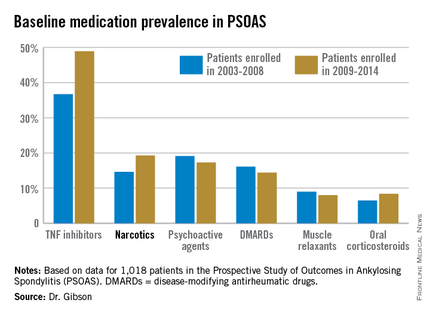
The patients enrolled in PSOAS during 2003-2014 are being followed longitudinally. They were recruited from community practice settings as well as academic centers. Dr. Gibson analyzed their medication use at the time of their baseline enrollment visit on a year-by-year basis, then stepped back to look at broader trends, comparing baseline medication use for patients enrolled in 2003-2008 to those enrolled during 2009-2014.
Not surprisingly, significantly more patients entered the study on a TNF inhibitor during the enrollment years 2009-2014 than during the first half of the study period: 49% compared with 37% during 2003-2008. What came as a surprise, however, was the time trend in narcotic use: 14.6% of ankylosing spondylitis patients in the 2003-2008 cohort were on narcotics, compared with 19.3% who enrolled since then.
“That’s a little bit troubling,” said Dr. John D. Reveille, professor and vice chair of rheumatology at the University of Texas, Houston, and head of PSOAS.
Oxycodone use nearly tripled between the first and second half of the study period: 1.1% were on the drug at enrollment in 2003-2008 compared with 3.1% in 2009-2014.
Of note, baseline use of oxycodone peaked in the enrollment class of 2012, 5.6% of whom were on the medication when they joined PSOAS. For narcotics overall, the peak year was 2008: over 27% of patients who enrolled in the study that year were on narcotic therapy at the time.
The use of NSAIDs – a guideline-recommended first-line therapy in ankylosing spondylitis – trended lower over time, albeit not significantly so. Among patients who enrolled in PSOAS during 2003-2008, over 70% were on NSAID therapy, compared with 66% of those who enrolled later.
There was no significant change over time in the use of DMARDs, psychoactive medications, muscle relaxants, or corticosteroids.
PSOAS is sponsored by the National Institutes of Health. Dr. Gibson reported having no financial conflicts.
DENVER – Even as prescribing of tumor necrosis factor inhibitors for patients with ankylosing spondylitis climbed in the last half-dozen years, patients’ use of prescription narcotics increased as well.
This was the unexpected finding of a comprehensive analysis of trends in medication use over a 12-year period among 1,018 ankylosing spondylitis patients participating in the ongoing multicenter Prospective Study of Outcomes in Ankylosing Spondylitis (PSOAS), Dr. Mary C. Gibson reported at the annual meeting of the Spondyloarthritis Research and Treatment Network.
“Even with treatment with TNF inhibitors, patients are often requiring additional pain control with narcotic medications. This could reflect inadequate pain control from directed therapy or a trend toward change in pain control use in general practice,” observed Dr. Gibson of the University of Texas, Houston.

The patients enrolled in PSOAS during 2003-2014 are being followed longitudinally. They were recruited from community practice settings as well as academic centers. Dr. Gibson analyzed their medication use at the time of their baseline enrollment visit on a year-by-year basis, then stepped back to look at broader trends, comparing baseline medication use for patients enrolled in 2003-2008 to those enrolled during 2009-2014.
Not surprisingly, significantly more patients entered the study on a TNF inhibitor during the enrollment years 2009-2014 than during the first half of the study period: 49% compared with 37% during 2003-2008. What came as a surprise, however, was the time trend in narcotic use: 14.6% of ankylosing spondylitis patients in the 2003-2008 cohort were on narcotics, compared with 19.3% who enrolled since then.
“That’s a little bit troubling,” said Dr. John D. Reveille, professor and vice chair of rheumatology at the University of Texas, Houston, and head of PSOAS.
Oxycodone use nearly tripled between the first and second half of the study period: 1.1% were on the drug at enrollment in 2003-2008 compared with 3.1% in 2009-2014.
Of note, baseline use of oxycodone peaked in the enrollment class of 2012, 5.6% of whom were on the medication when they joined PSOAS. For narcotics overall, the peak year was 2008: over 27% of patients who enrolled in the study that year were on narcotic therapy at the time.
The use of NSAIDs – a guideline-recommended first-line therapy in ankylosing spondylitis – trended lower over time, albeit not significantly so. Among patients who enrolled in PSOAS during 2003-2008, over 70% were on NSAID therapy, compared with 66% of those who enrolled later.
There was no significant change over time in the use of DMARDs, psychoactive medications, muscle relaxants, or corticosteroids.
PSOAS is sponsored by the National Institutes of Health. Dr. Gibson reported having no financial conflicts.
DENVER – Even as prescribing of tumor necrosis factor inhibitors for patients with ankylosing spondylitis climbed in the last half-dozen years, patients’ use of prescription narcotics increased as well.
This was the unexpected finding of a comprehensive analysis of trends in medication use over a 12-year period among 1,018 ankylosing spondylitis patients participating in the ongoing multicenter Prospective Study of Outcomes in Ankylosing Spondylitis (PSOAS), Dr. Mary C. Gibson reported at the annual meeting of the Spondyloarthritis Research and Treatment Network.
“Even with treatment with TNF inhibitors, patients are often requiring additional pain control with narcotic medications. This could reflect inadequate pain control from directed therapy or a trend toward change in pain control use in general practice,” observed Dr. Gibson of the University of Texas, Houston.

The patients enrolled in PSOAS during 2003-2014 are being followed longitudinally. They were recruited from community practice settings as well as academic centers. Dr. Gibson analyzed their medication use at the time of their baseline enrollment visit on a year-by-year basis, then stepped back to look at broader trends, comparing baseline medication use for patients enrolled in 2003-2008 to those enrolled during 2009-2014.
Not surprisingly, significantly more patients entered the study on a TNF inhibitor during the enrollment years 2009-2014 than during the first half of the study period: 49% compared with 37% during 2003-2008. What came as a surprise, however, was the time trend in narcotic use: 14.6% of ankylosing spondylitis patients in the 2003-2008 cohort were on narcotics, compared with 19.3% who enrolled since then.
“That’s a little bit troubling,” said Dr. John D. Reveille, professor and vice chair of rheumatology at the University of Texas, Houston, and head of PSOAS.
Oxycodone use nearly tripled between the first and second half of the study period: 1.1% were on the drug at enrollment in 2003-2008 compared with 3.1% in 2009-2014.
Of note, baseline use of oxycodone peaked in the enrollment class of 2012, 5.6% of whom were on the medication when they joined PSOAS. For narcotics overall, the peak year was 2008: over 27% of patients who enrolled in the study that year were on narcotic therapy at the time.
The use of NSAIDs – a guideline-recommended first-line therapy in ankylosing spondylitis – trended lower over time, albeit not significantly so. Among patients who enrolled in PSOAS during 2003-2008, over 70% were on NSAID therapy, compared with 66% of those who enrolled later.
There was no significant change over time in the use of DMARDs, psychoactive medications, muscle relaxants, or corticosteroids.
PSOAS is sponsored by the National Institutes of Health. Dr. Gibson reported having no financial conflicts.
AT THE 2015 SPARTAN ANNUAL MEETING
Key clinical point: The use of prescription narcotics by patients with ankylosing spondylitis has gone up during the past 12 years, even as their use of tumor necrosis factor inhibitor therapy has grown.
Major finding: Among a large cohort of patients with ankylosing spondylitis, 14.6% were on prescription narcotic therapy during 2003-2008, compared with 19.3% in 2009-2014.
Data source: Analysis of 1,018 patients with ankylosing spondylitis, from PSOAS – a prospective, multicenter, longitudinal cohort study.
Disclosures: The ongoing PSOAS study is funded by the National Institutes of Health. The presenter reported having no conflicts of interest.
Exercise boosts medication’s benefits in ankylosing spondylitis
DENVER – Recreational exercise and tumor necrosis factor–inhibitor therapy provide synergistic improvement in the functional status of patients with ankylosing spondylitis, according to an analysis from the multicenter Prospective Study of Outcomes in Ankylosing Spondylitis (PSOAS).
Among 683 PSOAS participants prospectively followed for up to 12 years, those who consistently engaged in moderate recreational exercise, defined as at least 120 minutes of exercise per week, had significantly lower, more favorable Bath Ankylosing Spondylitis Functional Index (BASFI) scores during years 1-5 than did those who exercised less, even after controlling for baseline function and other potential confounders in a multivariate analysis, Dr. Lianne S. Gensler said at the annual meeting of the Spondyloarthritis Research and Treatment Network.
Additionally, a significant interaction was observed between exercise time and anti-TNF therapy. BASFI scores improved through 5 years of follow-up in TNF inhibitor users regardless of their exercise status, but the impact on functional status was “strikingly” greater in those patients on a TNF inhibitor who engaged in at least 120 minutes of exercise per week, according to Dr. Gensler of the University of California, San Francisco.
“This suggests that it’s not simply taking a TNF inhibitor that’s going to promote long-term function. These patients should also be exercising to synergize and get the best out of their therapy,” she emphasized.
The PSOAS cohort included averaged 43 years of age at baseline, with a mean 19-year disease duration and an average of 2.1 comorbid conditions. In a multivariate longitudinal analysis, several factors emerged as significant predictors of more pronounced functional impairment over time: being age 40 or older at baseline was associated with a 25% increased risk, opiate use was associated with a 12% increase in risk, a baseline Bath Ankylosing Spondylitis Disease Activity Index (BASDAI) score of at least 40 conferred a 19% increase in risk, as did a modified Stoke Ankylosing Spondylitis Spinal Score of 4 or greater.
Dr. Gensler drew a sharp distinction between the effects of moderate recreational exercise and occupational physical activity in ankylosing spondylitis patients. In an earlier landmark study involving 397 members of the PSOAS cohort with at least a 20-year history of ankylosing spondylitis, investigators mapped the patients’ work histories, the physical activities their work entailed, and the time they spent at each activity. Jobs that involved repeated bending, stretching, twisting, and vibration exposure were associated with worse BASFI scores and greater radiographic disease severity (Arthritis Rheum. 2008 Jun 15;59[6]:822-32).
Taking a step back to summarize what’s known today about what affects outcomes in ankylosing spondylitis patients, Dr. Gensler listed in the ‘bad’ column smoking, ongoing inflammation, baseline damage to the spine, certain occupational activities involving biomechanical stress, adiposity, and low socioeconomic status.
What’s good for patients with ankylosing spondylitis is physical therapy and back exercises – both will receive favorable marks in soon-to-be-published American College of Rheumatology guidelines on the management of ankylosing spondylitis that Dr. Gensler worked on – as well as TNF-inhibitor therapy, NSAIDs, and recreational exercise, which wasn’t addressed in the former guidelines.
Dr. Gensler reported receiving research funds from or serving as a consultant to AbbVie, Amgen, Celgene, Janssen, and UCB.
DENVER – Recreational exercise and tumor necrosis factor–inhibitor therapy provide synergistic improvement in the functional status of patients with ankylosing spondylitis, according to an analysis from the multicenter Prospective Study of Outcomes in Ankylosing Spondylitis (PSOAS).
Among 683 PSOAS participants prospectively followed for up to 12 years, those who consistently engaged in moderate recreational exercise, defined as at least 120 minutes of exercise per week, had significantly lower, more favorable Bath Ankylosing Spondylitis Functional Index (BASFI) scores during years 1-5 than did those who exercised less, even after controlling for baseline function and other potential confounders in a multivariate analysis, Dr. Lianne S. Gensler said at the annual meeting of the Spondyloarthritis Research and Treatment Network.
Additionally, a significant interaction was observed between exercise time and anti-TNF therapy. BASFI scores improved through 5 years of follow-up in TNF inhibitor users regardless of their exercise status, but the impact on functional status was “strikingly” greater in those patients on a TNF inhibitor who engaged in at least 120 minutes of exercise per week, according to Dr. Gensler of the University of California, San Francisco.
“This suggests that it’s not simply taking a TNF inhibitor that’s going to promote long-term function. These patients should also be exercising to synergize and get the best out of their therapy,” she emphasized.
The PSOAS cohort included averaged 43 years of age at baseline, with a mean 19-year disease duration and an average of 2.1 comorbid conditions. In a multivariate longitudinal analysis, several factors emerged as significant predictors of more pronounced functional impairment over time: being age 40 or older at baseline was associated with a 25% increased risk, opiate use was associated with a 12% increase in risk, a baseline Bath Ankylosing Spondylitis Disease Activity Index (BASDAI) score of at least 40 conferred a 19% increase in risk, as did a modified Stoke Ankylosing Spondylitis Spinal Score of 4 or greater.
Dr. Gensler drew a sharp distinction between the effects of moderate recreational exercise and occupational physical activity in ankylosing spondylitis patients. In an earlier landmark study involving 397 members of the PSOAS cohort with at least a 20-year history of ankylosing spondylitis, investigators mapped the patients’ work histories, the physical activities their work entailed, and the time they spent at each activity. Jobs that involved repeated bending, stretching, twisting, and vibration exposure were associated with worse BASFI scores and greater radiographic disease severity (Arthritis Rheum. 2008 Jun 15;59[6]:822-32).
Taking a step back to summarize what’s known today about what affects outcomes in ankylosing spondylitis patients, Dr. Gensler listed in the ‘bad’ column smoking, ongoing inflammation, baseline damage to the spine, certain occupational activities involving biomechanical stress, adiposity, and low socioeconomic status.
What’s good for patients with ankylosing spondylitis is physical therapy and back exercises – both will receive favorable marks in soon-to-be-published American College of Rheumatology guidelines on the management of ankylosing spondylitis that Dr. Gensler worked on – as well as TNF-inhibitor therapy, NSAIDs, and recreational exercise, which wasn’t addressed in the former guidelines.
Dr. Gensler reported receiving research funds from or serving as a consultant to AbbVie, Amgen, Celgene, Janssen, and UCB.
DENVER – Recreational exercise and tumor necrosis factor–inhibitor therapy provide synergistic improvement in the functional status of patients with ankylosing spondylitis, according to an analysis from the multicenter Prospective Study of Outcomes in Ankylosing Spondylitis (PSOAS).
Among 683 PSOAS participants prospectively followed for up to 12 years, those who consistently engaged in moderate recreational exercise, defined as at least 120 minutes of exercise per week, had significantly lower, more favorable Bath Ankylosing Spondylitis Functional Index (BASFI) scores during years 1-5 than did those who exercised less, even after controlling for baseline function and other potential confounders in a multivariate analysis, Dr. Lianne S. Gensler said at the annual meeting of the Spondyloarthritis Research and Treatment Network.
Additionally, a significant interaction was observed between exercise time and anti-TNF therapy. BASFI scores improved through 5 years of follow-up in TNF inhibitor users regardless of their exercise status, but the impact on functional status was “strikingly” greater in those patients on a TNF inhibitor who engaged in at least 120 minutes of exercise per week, according to Dr. Gensler of the University of California, San Francisco.
“This suggests that it’s not simply taking a TNF inhibitor that’s going to promote long-term function. These patients should also be exercising to synergize and get the best out of their therapy,” she emphasized.
The PSOAS cohort included averaged 43 years of age at baseline, with a mean 19-year disease duration and an average of 2.1 comorbid conditions. In a multivariate longitudinal analysis, several factors emerged as significant predictors of more pronounced functional impairment over time: being age 40 or older at baseline was associated with a 25% increased risk, opiate use was associated with a 12% increase in risk, a baseline Bath Ankylosing Spondylitis Disease Activity Index (BASDAI) score of at least 40 conferred a 19% increase in risk, as did a modified Stoke Ankylosing Spondylitis Spinal Score of 4 or greater.
Dr. Gensler drew a sharp distinction between the effects of moderate recreational exercise and occupational physical activity in ankylosing spondylitis patients. In an earlier landmark study involving 397 members of the PSOAS cohort with at least a 20-year history of ankylosing spondylitis, investigators mapped the patients’ work histories, the physical activities their work entailed, and the time they spent at each activity. Jobs that involved repeated bending, stretching, twisting, and vibration exposure were associated with worse BASFI scores and greater radiographic disease severity (Arthritis Rheum. 2008 Jun 15;59[6]:822-32).
Taking a step back to summarize what’s known today about what affects outcomes in ankylosing spondylitis patients, Dr. Gensler listed in the ‘bad’ column smoking, ongoing inflammation, baseline damage to the spine, certain occupational activities involving biomechanical stress, adiposity, and low socioeconomic status.
What’s good for patients with ankylosing spondylitis is physical therapy and back exercises – both will receive favorable marks in soon-to-be-published American College of Rheumatology guidelines on the management of ankylosing spondylitis that Dr. Gensler worked on – as well as TNF-inhibitor therapy, NSAIDs, and recreational exercise, which wasn’t addressed in the former guidelines.
Dr. Gensler reported receiving research funds from or serving as a consultant to AbbVie, Amgen, Celgene, Janssen, and UCB.
EXPERT ANALYSIS FROM THE 2015 SPARTAN ANNUAL MEETING

